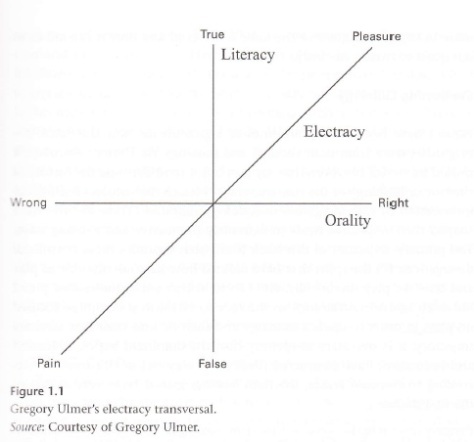It’s been a long time since I posted to this blog, and this is partly due to time constraints as a result of becoming involved in the academy again with the Interactive Media course I’ve been teaching at Emerson College for the past four years. Doing this every spring has introduced a new rhythm into my life whereby I usually collapse/relax once the course is done (and this lasts through the summer), begin to think about the course again come fall (including investigation of new textbooks and syllabus revision), and then teach the course in the spring. I have detours into little projects that occupy my time (one fall was devoted to researching genealogy; a summer or two was given over to working on interactive fiction projects, and last May-June was focused on finishing an interactive fiction for the Cover Stories “speed IF”). Since August, I’ve been spending a good bit of my spare time taking different MOOCs being offered by coursera.org and udacity.com–another way to stay busy!
Throughout this time, games and gaming have become more central to the course that I’m teaching, both in the readings and course content. Lately, I’ve been investigating the possibility of gamifying my syllabus and just didn’t have enough time to do so for Spring 2013. So when I discovered GamesMOOC and its focus on ARGs (Alternative Reality Games) and AR (Augmented Reality), I felt completely obligated (or I should say “intrinsically motivated”) to take this course. I return to blogging here, therefore, as a result of my participation in that course, hoping to achieve the “Games Based Learning Badge” that they are offering. We’ll see how well I do, given my various time constraints…. (I’m also developing a “mini MOOC” course for the UnderAcademy College that will be starting as the Emerson class ends).
I’ve also been following Gregory Ulmer‘s ongoing evolution over the past four years, in part by interviewing him for the class every year as well as by reading his recent book Avatar Emergency. His ideas about electracy become more clear the more I spend time with his thought, and it continues to unify a wide variety of reading, experience, and intuitions that I have regarding the transition from literacy to electracy that is occurring so rapidly. He recognizes what he calls the “third axis of electracy” as demarcating a spectrum of pleasure and pain (which, when superimposed upon the vertical axis of orality demarcating right and wrong and the horizontal axis of literacy demarcating true and false, attempts to capture a new dimension of experience now more and more valued as embodiment gradually loses the stigma associated with it by the Judeo-Christian religions. See below. [image from Jan Rune Holmevik’s book Intervention: Free Play in the Age of Electracy).
All the recent talk of “fun engineering,” “the engagement economy,” and “hard fun” points toward the harnessing of pleasure by means of gamification and confirms the work that Ulmer has done providing the philosophical foundations undergirding these movements in our culture and educational institutions.
The third round of the GamesMOOC just focused on “Fun, Flow and Fiero” for its first TweetChat and so it too falls into this recent trend of figuring out how to tap the pleasure gradient in the era of electracy.





 Posted by Richard Smyth
Posted by Richard Smyth